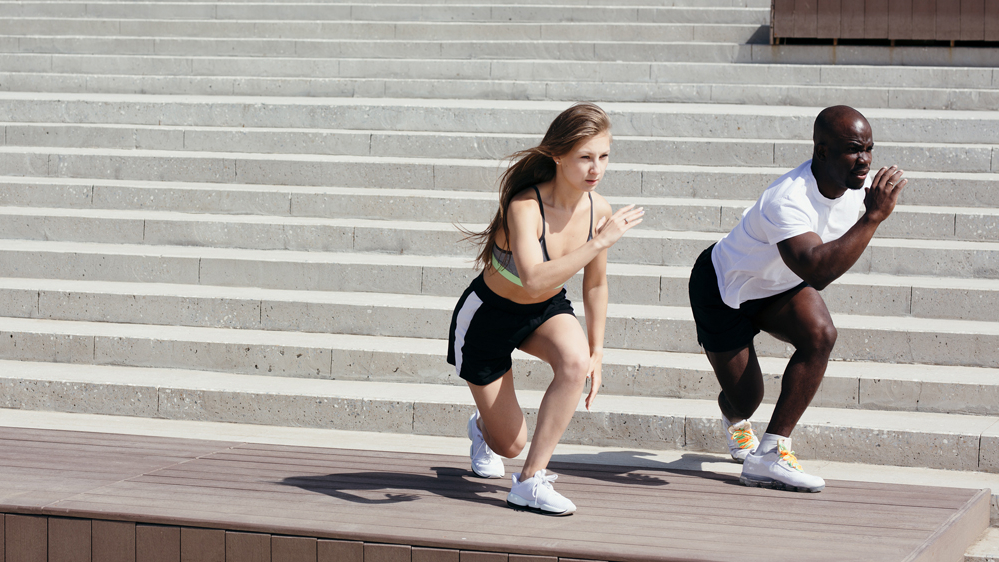How To Do The Curtsy Lunge
Step back and across to work your thighs and glutes in new ways

In This Series
- Introduction
- Lunge Variation: Reverse Lunge
- Lunge Variation: Side Lunge
- Lunge Variation: Clock Lunge
- Lunge Variation: Walking Lunges
- Lunge Variation: Jump Lunge
- Lunge Variation: Curtsy Lunge
While the curtsy has never been less popular, the curtsy lunge is a move that’s very much coming into fashion and with good reason. If you’re looking for a way to mix up your usual roll call of squats and lunges come leg day, then the curtsy lunge is an exercise worth including, because it targets the lower body in different ways.
While the quads and glutes remain the principal targets of the curtsy lunge, it also works the inner thighs and gluteus medius muscles – both areas that get off easy when you perform regular lunges. These muscles help to stabilise the body and if you’re a runner then you’ll feel the benefits of repeated curtsy lunge sessions, because the move helps with your running posture and increases your resilience to injury.
There is one caveat to the high praise we’re giving the curtsy lunge, however, which is that it can put extra strain on the knees as you take them out to the side and down during the move. The lateral movement in particular can risk inflaming niggles, so be careful to maintain correct form and opt for lighter weights if using any. If you have any concerns about your knees, it might not be the best move to add to your workout routine.
How To Do The Curtsy Lunge
Stand with your feet shoulder-width apart. Step back and across with your right foot so the toes of your right foot make contact with the ground in line with the outside of your left foot. Lower until your front thigh is roughly parallel to the ground, then push back up to your starting position. You can do all your reps on one side before switching, or alternate legs.
See related
- Do This Leg Workout At Home To Strengthen Your Lower Body
- Try This Leg Strength Workout After Your Next Easy Run
- The Best Leg Exercises For All Levels Of Gym-Goer
You can also do a version of the curtsy lunge in which you step back, drop and then aim to hold that position for set time, rather than coming back up and trying to hit a certain number of reps. This will increase the benefits to your stabilising muscles as you work to keep your balance.
Sign up for workout ideas, training advice, reviews of the latest gear and more.

Nick Harris-Fry is a journalist who has been covering health and fitness since 2015. Nick is an avid runner, covering 70-110km a week, which gives him ample opportunity to test a wide range of running shoes and running gear. He is also the chief tester for fitness trackers and running watches, treadmills and exercise bikes, and workout headphones.
